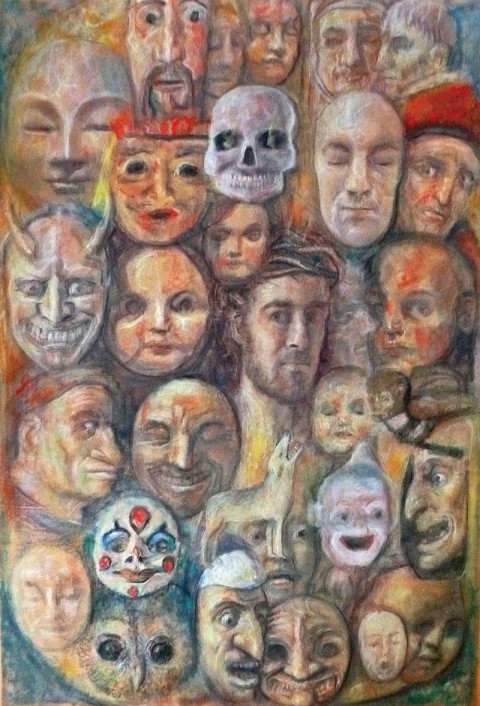Christ and the Masks, by Paez Antonio

Votive objects, religious relics, timeworn crucifixes, and fragments of funerary sculptures appear frequently in the work of Paez Antonio. The artist from Cadiz, Spain, is an archaeologist of the human memory; he follows fellow Spaniards Francisco Goya and Pablo Picasso in his fascination with memento mori. This unsettling but compelling drawing of the thorn-crowned Christ—surrounded by an eclectic ensemble of death masks, clown faces, skull heads, horned demons, leering grotesques, sightless baby dolls, a beatific Buddha, an unblinking owl, and a howling wolf—takes inspiration from crowd scenes in paintings of the mocking of Christ by Hieronymus Bosch, the late medieval master of the bizarre, as well as Self-Portrait with Masks by early surrealist painter James Ensor, who was drawn in his own way to Christ’s Passion. All the death-tainted debris may seem like the stuff our 21st-century nightmares are made of. But look long enough at the half-turned head of the suffering Christ, very much alive at the center of this claustrophobic clutter, and you might be surprised by a sudden feeling of well-being—even hope. Says Antonio: “The whole image directs us to the Messiah, the calm, slightly sad, manly, yet mysterious face at the eye of this storm of masks. . . . In contrast to the false faces, Christ looks directly out at us, calling the viewer to be with him in troubled moments in time.”




